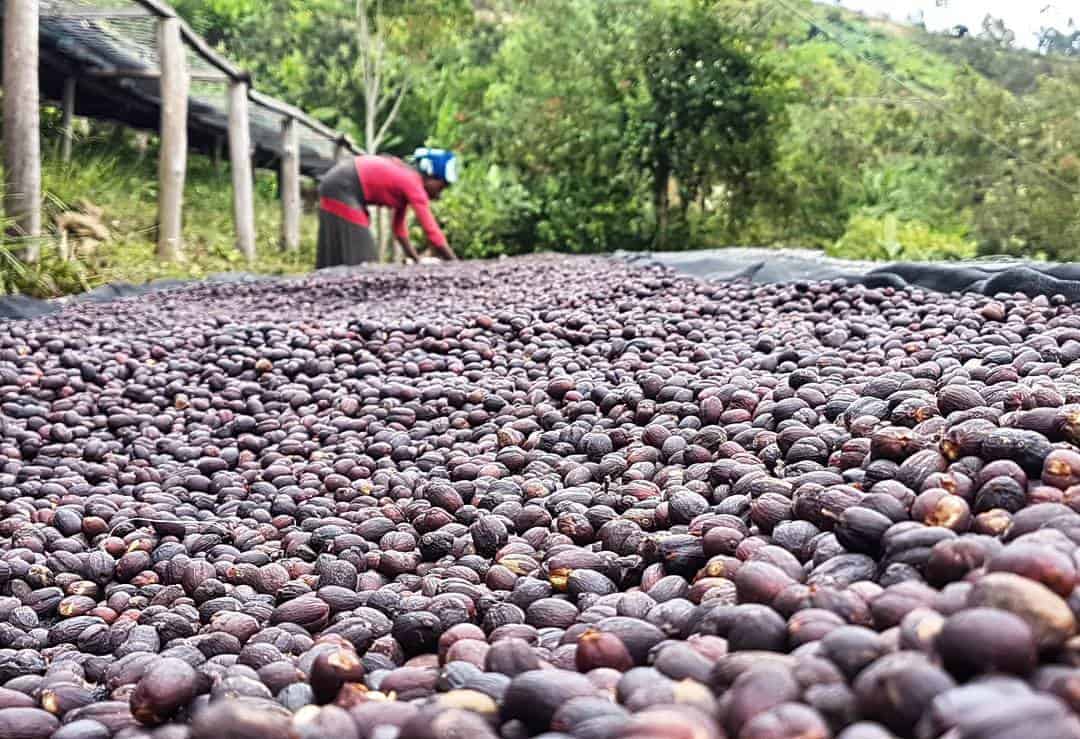Pulped Natural processing is a method that removes the outer skin of the coffee cherry to expose the fruity layer, and is then allowed to dry in the sun (or sometimes, with mechanical dryers). It's considered to be half way between dry processing and wet processing - it requires more processing time and consumes more water than straight natural processing, but also offers a better quality cup.

Natural Processed Coffee - MTCo.
Pulping the Coffee to Remove the Outer Skin
Often used in Brazil where strip-picking is the norm, the pulped natural processing method involves first pulping the coffee to remove the outer skin, though this is done without the fermentation stage. The coffee cherry is then sun-dried, with much of the mucilage still attached, on a raised drying bed or on a patio.
The pulped coffee cherry can also be ground into a fine powder known as coffee flour, and also has a high nutrition content with a lot of potassium and fiber, along with natural caffeine.
Regions Where Pulped Natural Processing is Used
The pulped natural coffee processing method works best in regions where the humidity is low so the coffee's mucilage can be dried quickly without fermentation occurring. Coffees must be turned regularly to avoid mildew, which can lead to mold and fungus.
Characteristics of Coffee with Pulped Natural Processing
The pulped natural method exhibits characteristics of both wet processing method (good acidity) coffee and dry processed green coffees (sweetness, body), with some of the full taste of dry processed coffee yet cleaner in the cup, similar to a wet processed coffee.
Pulped Natural processing is done to bring out the natural sweetness and aromatics of coffee - it will lead to a better tasting coffee if done properly.
Coffee and Espresso Brewing Tips
For detailed definitions of coffee terminology see the Coffee and Espresso Glossary. Also check out the World's Best History of Coffee.
Buy Gourmet Coffee Beans
- ✔️ Fresh roasted to order
- ✔️ 100% high qualtiy Arabica coffee
- ✔️ Custom grind (or whole bean)
- ✔️ 1-way valve, laminate bag (for freshness)
- ✔️ Bulk discounts


Leave a Reply